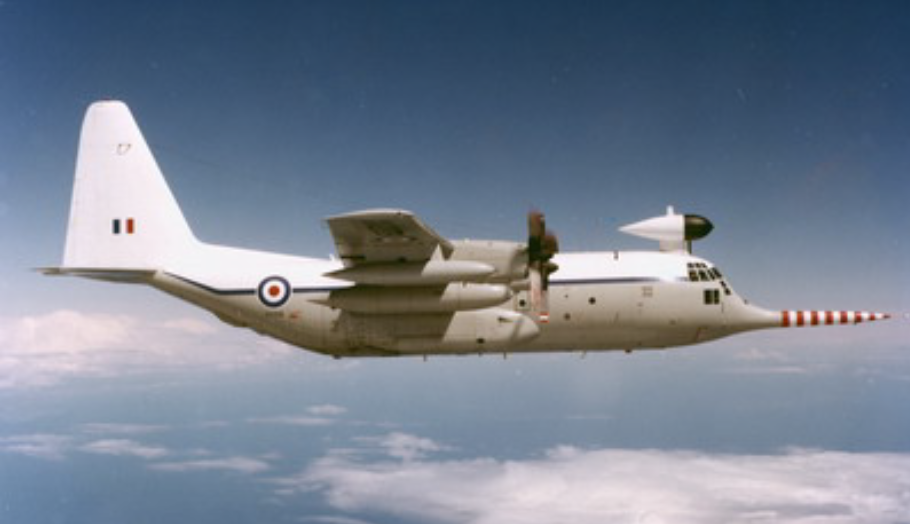

FAAM fanatics
Jessica Victor, along with colleagues from Derby University, have been lucky enough to make a documentary about the Facility for Airborne Measurements (FAAM).
In March 2011, Jessica Victor was offered the opportunity of a lifetime to produce a documentary about the Facility for Airborne Atmospheric Measurements (FAAM). FAAM is the result of collaboration between the Met Office and the Natural Environment Research Council (NERC) and has been established as part of the National Centre for Atmospheric Sciences (NCAS). It provides an aircraft measurement platform for use by all the UK atmospheric research community on campaigns throughout the world.
The modified BAe 146-301 large Atmospheric Research Aircraft (the ARA) is owned by BAE Systems and operated for them by Directflight. The aircraft is based at Cranfield University in Bedfordshire and contains sophisticated instruments to study radiative transfer, atmospheric chemistry, cloud physics and the dynamics of weather systems.
Jessica, producer for the documentary, was given permission to film not only at the aircraft’s base but also on board the aircraft during field studies. Along with a team of undergraduates from Derby University the documentary is now becoming a reality as they prepare their end of year project and future submission to film festivals. This was made possible by the equipment the university could provide and the dedicated team of final year students. The team also includes Adam Barnes (director), Sam Drake (director of photography), Smita O’Dedra (production manager), Dominic John (camera); David Watts (sound) and Alex Simpson (editor).
Jessica explained that ‘the documentary will be following the FAAM aircraft as it collects valuable data in the Arctic that will be used to improve future predictions on the climate. To achieve this, the aircraft will fly as high as 35,000ft and as low as 50ft above the sea, while testing the atmosphere with specialist equipment. This will cover surveys of the arctic ice density, surface sources of aerosols, measurements of aerosols and microphysical properties of clouds. The documentary will include interviews with key members of the FAAM team and the research scientists going on the detachment both at their base in Bedfordshire and in Kiruna, Sweden.’
‘Adam, Sam and I made it out to Kiruna in March for two weeks. It was positively balmy for the time of year with temperatures at -3°C and still an amazing amount of ice and snow. Snow drifts were six foot high sitting along the roadsides and pathways. We must thank all those people who have contributed to this campaign and provided us with the opportunity to film an incredible documentary’ Jessica added.
‘The aim is to produce three short documentaries: a 10 minute short film for our final project submission at Derby University; a 30 minute edit for Film Festival submission; and a full hour documentary. We have already gathered test shoot footage of the plane, which looks good and highlights the size of the project. Along with this we have started confirming our potential interviewees and isolating the areas we wish to concentrate on, to provide an informative and interesting documentary.’ said Jessica.
The project needs to raise £5,500 to cover their costs and the team have already raised about half that amount. Their trip to the Arctic in temperatures of around -15 to -25°C meant it was essential the team had the appropriate clothing and covers for the cameras, plus a vehicle to transport them and the equipment, to ensure they got the best footage. The remaining money will go on editing the documentary. Visit http://www.indiegogo.com/projects/faam-documentary/x/448070 for more information and you can follow the team on Twitter and Facebook.
The history of FAAM
From as early as 1920, RAF planes were used to make vertical ascents for meteorological purposes, firstly in the UK, but between 1943 and 1946 in all theatres in which the RAF conducted operations.
Initially the planes used were all biplanes with open cockpits, until the Gladiator, with an enclosed cockpit, was introduced in 1939. These were replaced with the Spitfire used for high-altitude ascents from 1941 and by the Hurricane in 1944. A Meteorological Research Committee (MRC) had been set up in 1941 by the Air Ministry to deal with a number of issues that had arisen during the early years of the
Second World War including condensation trails (contrails) that revealed the planes location to the enemy. The early airborne investigations found that contrails were caused by changes in the air pressure as the wing passes though the sky - and were generally more persistent on humid days. Armed with this knowledge, the RAF was able to plan certain flights around weather conditions and therefore minimise the chance of pilots revealing their locations.
In 1946 a new and independent Meteorological Research Flight (MRF) was formed at the Royal Aircraft Establishment in Farnborough. MRF commenced with the establishment of a team of scientific staff, two Mosquito and two Halifax aircraft and aircrew. These aircraft were soon replaced by Hastings and Varsity aircraft. During the 1950s, the need for data increased - and the size and number of aircraft
used followed suit. A specially adapted Canberra aircraft helped the MRF to understand the causes of turbulence. From late 1973 until March 2001, the Met Office used a Lockheed Hercules W Mk.2, more commonly known as ‘Snoopy’ because of a long nose extension used to mount sensors.
In 2001, the Natural Environment Research Council (NERC), Met Office and university community joined forces to establish the Facility for Airborne Atmospheric Measurements (FAAM) operating the BAe 146-301 aircraft. For more information about FAAM visit http://www.faam.ac.uk/ .



